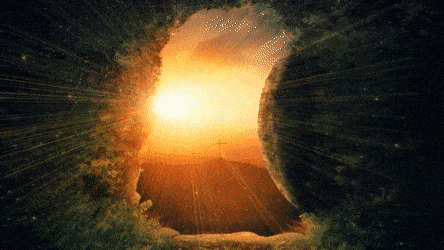Luke 19:28-40
I was in the last parish I served in South Carolina, a small town called Timmonsville, about 10 miles from Florence. I pastored two small congregations, the Timmonsville United Methodist Church, in the town, and the East Timmonsville United Methodist Church, a little ways out in the country. Some of my church members in East Timmonsville kept talking about a wonderful Bible study group that they were attending that was taught by the sister of one of them. She was not a Methodist, but belonged to some kind of independent Pentecostal church. But they all thought she was very knowledgeable about the Bible and they were getting a lot out of the Bible studies, and they kept asking me to come and attend the group.
Finally, I decided that I should at least go and check it out and see what my church members were being exposed to in this Bible study. As it turned out, they were just beginning a new study on the book of Genesis. The group met in this woman’s home, and everyone was very welcoming. There were about 12 people there, some from my church and others from this woman’s church. She began to teach about the creation of the earth, and as she spoke I began to realize that she was describing the world as being flat, with a dome over it. She talked about how the sun rotated around the earth, giving the appearance of rising and setting. Finally, I just couldn’t be silent any longer. I raised my hand and said, “You are describing the earth as if it were flat.” She said, “Yes, that’s the way that God created it.” “But the earth is not flat,” I responded. Her answer was, “If it’s round now, then God must have changed it since creation, because the Bible says that he created it flat.” This woman found it easier to believe that the earth changed shape (by God’s hand) than to believe that the Bible might not be literally, word-for-word true on matters of science.
There are people who believe that the world is flat, even in 2022. And many of them are conservative religious groups. They believe in the Flat Earth theory. I read a lot about this collection of people in a book called Off the Edge: Flat Earthers, Conspiracy Culture, and Why People Will Believe Anything, by Kelly Weill, which was just published this year. Weill says that Flat Earth theory “represents a profound misunderstanding of the world,” and yet it has skyrocketed in popularity since 2015. By at least the 5th century BCE Greek astronomers and mathematicians had already determined that the earth is round. Flat Earth theory did not emerge until the mid-1800s in a utopian commune in England. It arose in some hard-core religious groups in the U.S. in the early 1900s and was connected to the moon-landing skeptics of the late 20th century. But it has seen a reboot in popularity in recent years.
Weill describes Flat Earth theory as “the ultimate incarnation of conspiratorial thinking.” She writes, “Members of the movement believe governments and scientists are actively peddling a ‘globe lie’ in order to control the world by tarnishing religious teachings or by making people feel insignificant next to the great expanse of outer space. For the past 150-odd years, this bizarre theory has grown by borrowing age-old mistrusts and exploiting new forms of communication, from newspapers to radio to – eventually, explosively – the internet.”
One example of a Flat Earther was Samuel Shenton of England, who launched the International Flat Earth Research Society in December of 1965. This was during the space race between the United States and the Soviet Union. The IFERS “maintained that no one could orbit Earth because no one could find their way out of the planet’s sturdy domed ceiling,” according to Weill. And yet, in the spring of 1961 both countries had put a man into space. Shenton told a reporter at the time, “It would not have been possible to put a man in space if the world was round, because if the world was revolving the man could not be recovered.” He explained that the Soviet cosmonaut who first orbited the earth in April of 1961 “may have thought he went in a circle around the earth, but actually he was traveling in an ellipse parallel to earth.” After NASA and the Soviets had launched lunar orbiters that took pictures from space clearly showing that the earth was round, Shenton alleged that it was all a cover-up: “That’s where those Americans and Russians are so damned cunning. For some reason or other they obviously want us to think the world is round. Some of the pictures have been blatantly doctored. Studio shots, probably.”
After Shenton died, the Flat Earth movement died down for a while. But by 2018 it was bigger than ever. And we owe it all to the internet. The internet made it easier for people to sow the seeds of a hoax and for people to find others of like-mind who share their suspicions. In 2014 people began uploading Flat Earth videos to You Tube and establishing Flat Earth Facebook pages. All of a sudden, millions of people had access to their propaganda. And this was taking place as many Americans had developed a distrust of mainstream media. A 2018 Pew poll reported that 61% of Americans said the media deliberately withholds important stories from the public. As the skepticism of the traditional media outlets grew, people turned to You Tube as an alternative news source. Weill writes, “These are real people willing to say what the media won’t, the reasoning goes. Their amateur explanation can override expertise, especially for the many people who make You Tube their primary news source.”
But in spite of all of this misinformation being put out there by Flat Earthers, the truth will not and cannot be silenced: the earth is not flat, it is round. It was shown to be round 2700 years ago and it has been seen from space, clearly as a round planet. There is proof that the earth is round; there are only conspiracy theories that it is flat.
In the story of Palm Sunday, when Jesus came riding into Jerusalem on a donkey, or a colt as Luke records it, we have a declaration that nothing can silence the truth. Let’s take a closer look.
Jesus knew that his life was in danger. The Jewish authorities had been looking for a way and an excuse to arrest him and they wanted him dead. And he had clearly made elaborate plans for this entering of the city; there was a colt tied up and waiting for him at a designated spot. He sent two of his disciples along to retrieve it and gave them the password to give to the owner. They brought the colt to him and they threw their own cloaks over its back, and Jesus mounted the colt and rode into the city.
This was no quiet ride, no effort to hide his presence, no attempt to sneak into town under cover of darkness. No, Jesus rode in surrounded by a crowd of his followers, who were elated at his presence in Jerusalem for the Passover celebration. They sang joyful hymns of praise to God in loud voices as they walked beside him into the city, grateful for all the miracles they had seen Jesus perform. It was a time for festivity and shouting, not for cowering or hanging back. And what were they shouting? “Blessed is the king who comes in the name of the Lord!”
Some of the Pharisees who were watching this public display spoke up to Jesus and told him to scold his disciples for their behavior. Why did the Pharisees speak like this to Jesus? Maybe they were embarrassed by such a wild, ecstatic expression of praise. Maybe they were trying, in their own way, to warn Jesus of the danger of this kind of demonstration. They well knew of the plots against him.
But Jesus answered them, “I tell you, if they keep quiet, the stones will cry out.” Some translations say “shout out.” The stones would make some noise! H. Stephen Shoemaker, Senior Minister of Myers Park Baptist Church, in Charlotte, NC suggests that perhaps the stones would shout out because this is a truth that is “too good to have its mouth shut. It may be temporarily silenced, but not for long.” The truth that Jesus is a king – the Messiah from the line of David – is a truth that is so powerful it must be told. Jesus was the One that they had been waiting for. God had finally sent the Messiah. But many had missed him because he wasn’t what they were expecting. But that didn’t stop this from being the truth. Just because the religious establishment didn’t agree with it or accept it, didn’t change the fact that it was the truth. And the truth cannot be ultimately silenced.
Right now, Vladimir Putin is telling one version of “truth” to his own people about what is happening in Ukraine. He is doing that by tightly controlling the media in Russia, by limiting what information gets out to the public. But even in Russia, sooner or later, the truth will not be silenced. We have photographs. We have witnesses. We have evidence. And that truth will convict Putin of war crimes, whether or not there is ever a formal trial. The world will know that he is guilty. The truth will not be silenced.
After Jesus was crucified, Satan, the father of all lies, thought that he had won. He thought that death had defeated God’s Son. For three days Jesus lay in the grave. But on Easter morning, the truth was shouted loud and clear: “He is not here! He is risen!” And that truth has never been silenced, no matter the circumstances. The story is told of a rally that was held in Russia in the early days of Communism, when the leaders were trying to drive religion out of their country and out of their people. A large crowd of several thousand people were gathered to listen to an atheist speak about how there was no God and no Christ, no hope to be found in religious faith. After he had talked for nearly two hours, he asked if anyone had any questions. An older gentleman came up on to the stage, stood in front of the microphone and said in a firm voice, “Jesus Christ is risen!” And all the crowd responded with the other half of the Easter greeting, “Christ is risen indeed!” No, you can’t silence the truth.

























